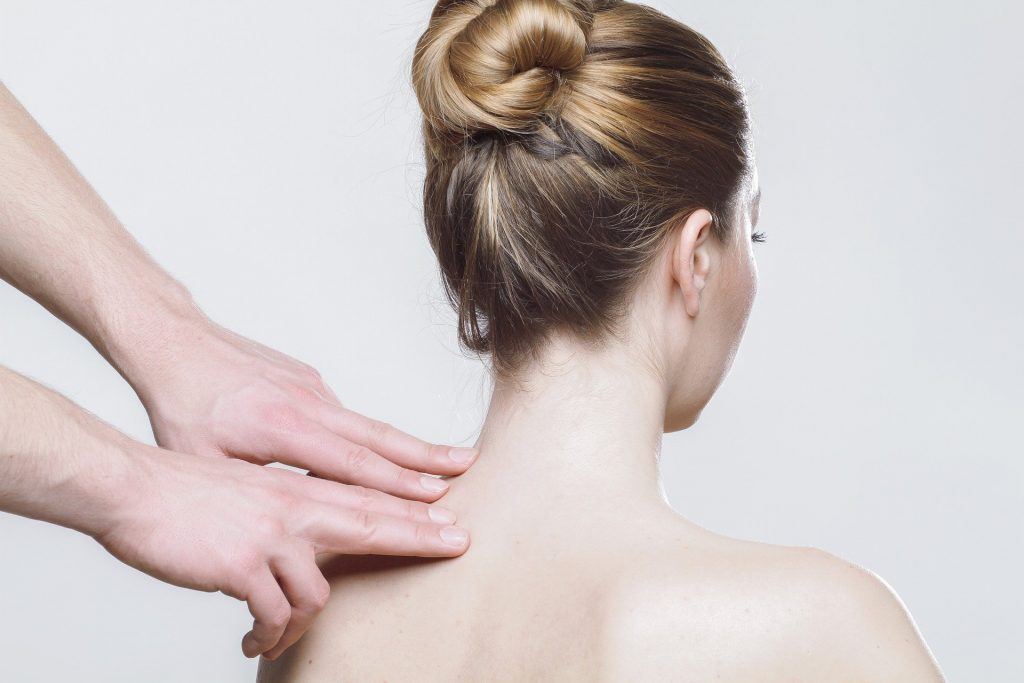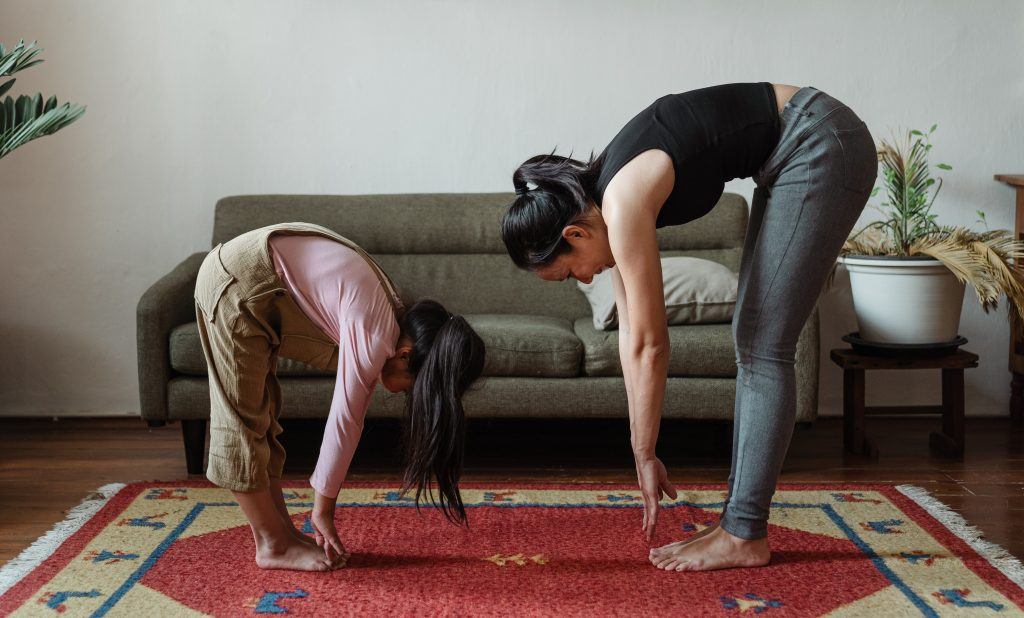Sharing a helpful guest post on dealing with back pain by Michelle McWilliam, Osteopath and Acupuncturist and co-owns The Totalcare Clinic
If you work from home, whether because of Covid-19 or as a choice you had already made, you may find yourself working over a low table, or perhaps sitting at a desk for far too many hours each day?
If you balance this with motherhood – or perhaps you are a full-time mum – you are probably
carrying a baby in your arms or a sling or are carting a car seat about. If you have a toddler in the mix, you are carrying a heavier – and wrigglier – small child.

This is, of course, part and parcel of life and our body is designed to be able to undertake these
activities. However, if this coincides with a combination of repetition and inadequate physical
fitness, we can develop injuries that cause pain, ranging from a mild backache to serious pain.
What you don’t want is for that pain to stop you doing what you love. But what can be done about it?
Understand your back

Knowing how our bodies work empowers us to make the correct decisions on how best to look after ourselves, whether that’s what we choose to eat, how much we exercise or the daily stretch routine we participate in. The spine consists of a stack of bones called vertebra and sandwiched between each bone is disc. These discs are the shock absorbers for our spines and are incredibly strong. Imagine a jam doughnut. The jam in the middle is the nucleus pulposus, the dough around the outside is the annulus pulposus. The sugary coating around the outside is the annular ligament. Together these structures produce a disc that can be squashed in all directions to allow movement of the spine. Holding all of this together are ligaments and a complex array of muscles, which support the central column on bones and discs.
Causes of pain

Different issues with the spine can cause pain. Most common is the overuse of muscles. This can cause a deep, dull ache which gradually builds up during the day. This is due to muscle fatigue and is an indicator that the spine and muscles around it can no longer maintain the work you’re expecting of them. Alternatively, sudden, cramp-like pain can be caused by muscle spasms. This is where the muscles of the back feel the need to spasm as tightly as possible to stop you doing something, in an effort to reduce possible injury.
More severe back pain can be caused by damage to the discs of the spine. Image the jam doughnut between two plates. As you squish the plates together you squish the disc. If you place more pressure on one side of the disc, the central jam can push out towards the sugary coating. In cases of continued pressure, this sugary coating can become damaged and the jam and dough can produce abulge. In the worst cases the dough, or annulus pulposus, is also damaged and the jam, nucleus pulposus, can come outside of the doughnut, resulting in herniation. If the disc bulge pushes out at just the right angle it can place pressure on the nerve which can produce pain. This is known a nerve root compression.
Avoiding and treating back pain

When neck or back pain starts it becomes difficult to move. Our body becomes stiff and immobile either due to muscles spasms or the pain that restricts our movement. The first stage is to try and reduce the acute nature of the pain. This may be helped with hot or cold packs, or pain medication as prescribed or through a GP. Once pain has started to reduce, some movement will return as the muscles start to relax. Manual therapy can then be used to try to further reduce the muscle spasm, mobilise stiff joints and improve the movement of the spine.
Exercises are, of course, an important part of maintaining health for the spine. They help not only to prevent injury but also for the treatment of injuries once they have started. Tai Chi, Yoga and Pilates are all excellent forms of exercise to maintain the strength of muscles in the spine, your core control. They can also improve and/or maintain the flexibility of the ligaments, muscles and joints of the spine and neck. Posture and manual handling techniques are incredibly important for preventing injury. Lifting incorrectly, especially with an added weight such as a child, can add a large amount of pressure onthe neck and spine. If this is added to poor spinal health due to poor posture and declining physical fitness, the chances of injury are increased.

Slipped – or herniated – disc
For disc problems to resolve, the body needs to be given the right environment to help itself. This means that the spine needs to be moving to the best of its ability, with enough strength and control to undertake the activities that are expected of it. Osteopaths, Chiropractors and Physiotherapists are all skilled and able to provide the correct treatment and advice to try to help with back and neck pain. In cases where the body is unable to heal itself and manual therapy treatment has been unsuccessful, clinics can recommend IDD Therapy. This form of treatment is a specialised form of spinal decompression, controlled through computers to provide the exact amount of decompression to a targeted area for a sustained period of time. The targeted area means that the specific disc that is causing the issue can be targeted rather than broad traction throughout the whole spine. The gentle nature of the treatment means that the muscle spasms can be eased to improve spinal mobility and, therefore, proves a far more suitable environment for the spine to heal.
As the pain subsides, manual therapy and gentle exercise can, of course, be re-introduced to help get patients back to full health again.

Keeping your body strong and mobile is the key to enjoying a long, enjoyable and – importantly – pain free life. However, since over eighty percent of people will experience back or neck pain at some stage in their lives, it’s reassuring to know that in most cases in can be helped quickly with the right management or treatment.
ABOUT THE AUTHOR
Michelle McWilliam is a highly experienced Osteopath and Acupuncturist and co-owns The Totalcare Clinic in Botley, just outside of Southampton. The clinic provides Osteopathy for adults and children, Acupuncture, Sports Massage, IDD Therapy, and boasts 48 classes per week of Pilates, Yoga and Tai Chi.
‘Intervertebral Differential Dynamics’ or IDD Therapy is the fastest growing non-surgical
spinal treatment for intervertebral discs with over 1,000 clinics worldwide and 34 clinics
across the UK. Safe, gentle and non-invasive, IDD Therapy helps patients who need
something more for their pain when manual therapy alone is insufficient to achieve lasting pain relief.